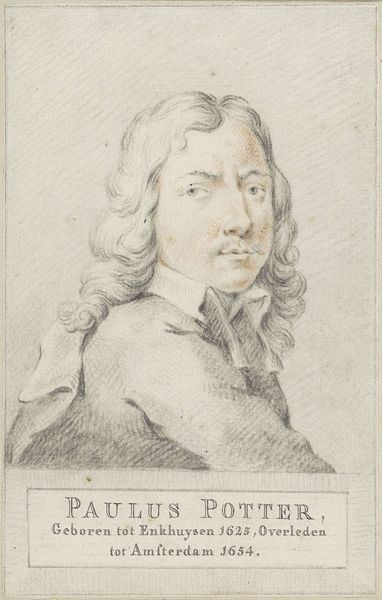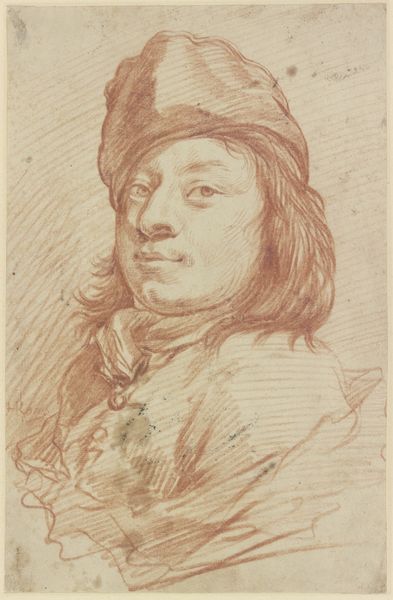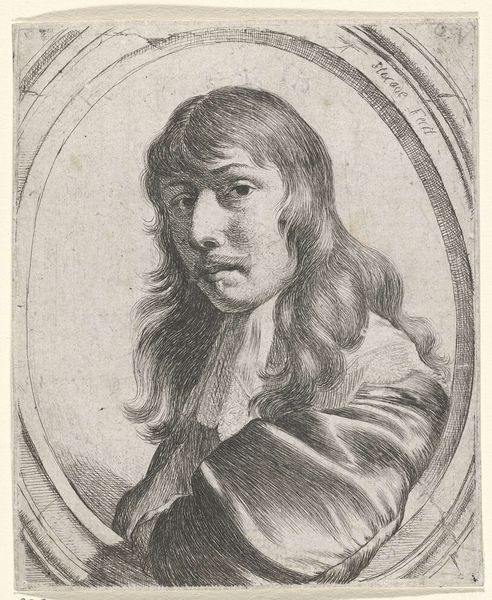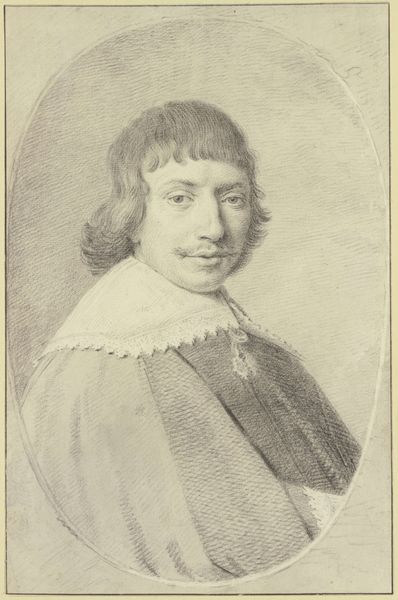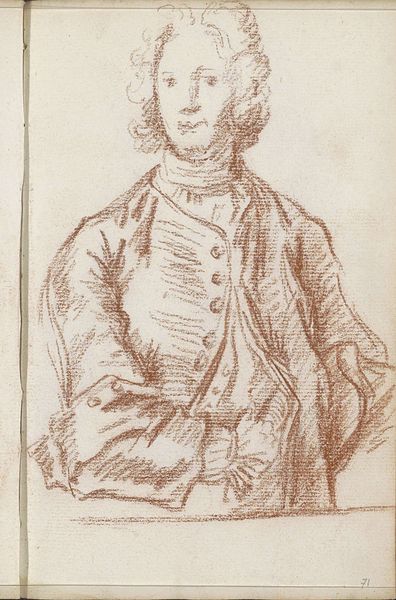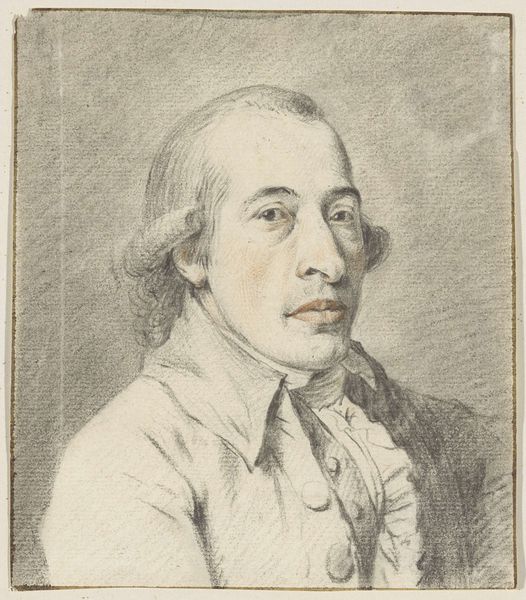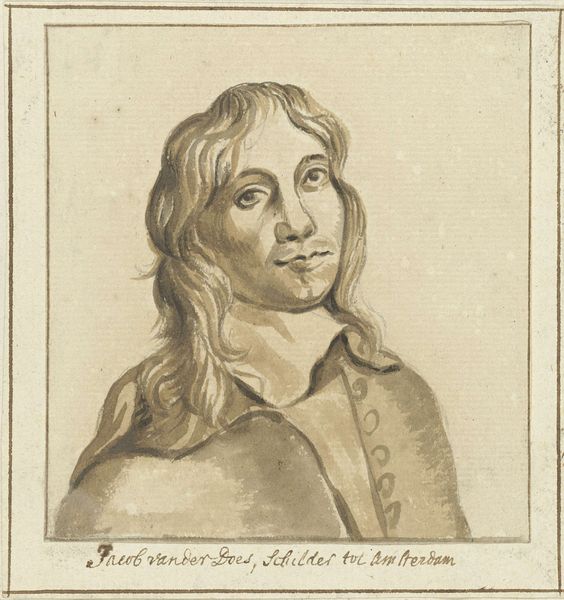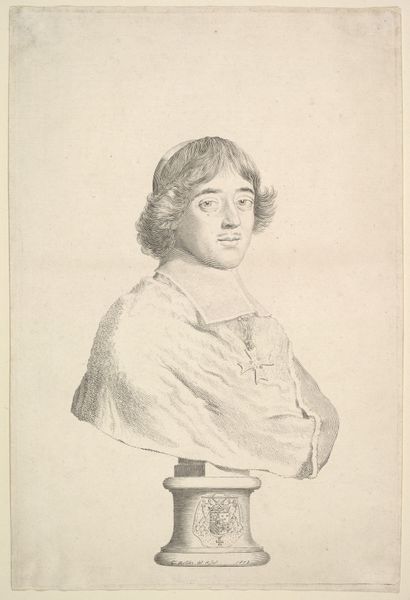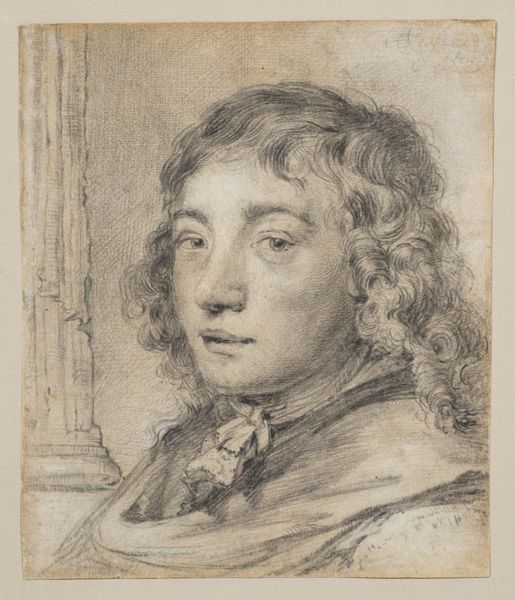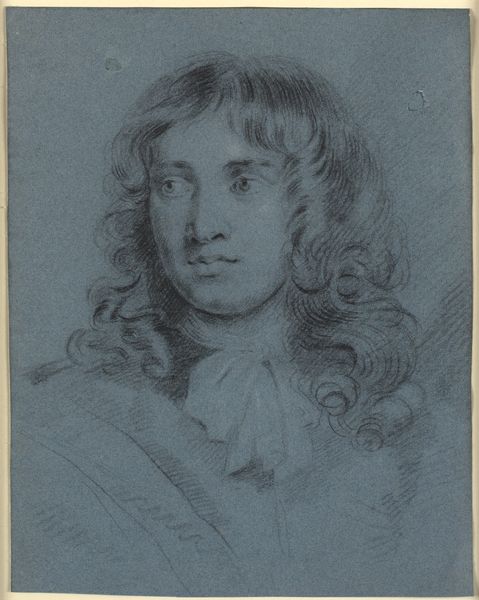
drawing, pen
#
portrait
#
pencil drawn
#
drawing
#
amateur sketch
#
facial expression drawing
#
light pencil work
#
dutch-golden-age
#
pencil sketch
#
figuration
#
portrait reference
#
pencil drawing
#
animal drawing portrait
#
pen
#
portrait drawing
#
pencil work
#
academic-art
Dimensions: height 209 mm, width 161 mm
Copyright: Rijks Museum: Open Domain
Editor: This is a portrait of Jan de Visscher by Cornelis van Noorde, created in 1775. It's a drawing made with pen and pencil, and it strikes me as quite intimate, almost like a quick study. What do you see in this piece? Curator: I see a work deeply embedded within the social and intellectual landscape of its time. Van Noorde captures Visscher with a directness that speaks to the Enlightenment's emphasis on reason and observation. Consider the context: the Dutch Golden Age has waned, yet portraiture remains a powerful tool for asserting identity and status. Do you notice how Visscher's gaze engages the viewer? It's not just a likeness; it's an assertion of self. Editor: Yes, his eyes are definitely the focal point. But there's a softness to the drawing, a lack of rigid formality, that feels somewhat modern. Curator: Precisely. This "softness" is where we can trace the intersection of artistic tradition and evolving social norms. While the sitter's attire alludes to his position – "Konstig Schilder en Plaat Snyder," or renowned painter and printmaker – the informality of the sketch suggests a shift away from the rigid class structures of previous eras. The choice of drawing, a less formal medium than painting, could also speak to a growing emphasis on individual expression. How does that strike you? Editor: That makes a lot of sense. It’s interesting how even a seemingly simple portrait can reveal so much about the society it was created in. I initially saw it as just a drawing, but now I understand it reflects broader cultural shifts. Curator: Indeed. Artworks are never created in a vacuum; they are always in dialogue with the historical, social, and political forces shaping them. It's through that lens we can gain a richer understanding of not only the art but also ourselves.
Comments
No comments
Be the first to comment and join the conversation on the ultimate creative platform.

